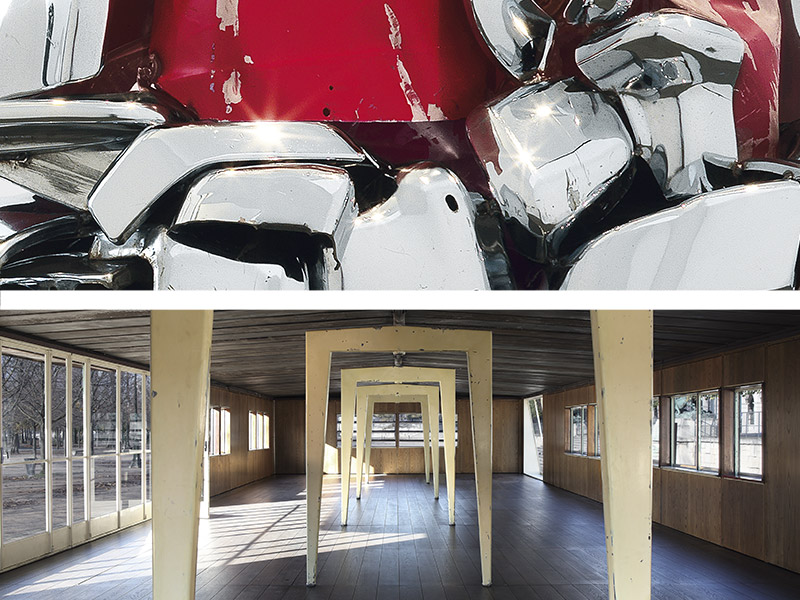
Gagosian New York, in collaboration with Galerie Patrick Seguin, Paris, is pleased to present works by American artist John Chamberlain and French architect and designer Jean Prouvé, two twentieth century innovators who harnessed the strength and suppleness of metal to new potential in their respective fields. Large- and small-scale sculptures by Chamberlain will be in visual dialogue with two prefabricated houses and key architectural models by Prouvé. John Chamberlain began to create distinctive metal sculptures from industrial detritus during the late 1950s. While freely experimenting with a range of inexpensive materials—from paper bags to Plexiglas, foam rubber, and aluminum foil—again and again he returned to metal car components such as bumpers and hoods, which he dubbed “art supplies.” The assemblages preserve traces of his manipulation of machine-made elements: crumpling, bending, twisting, painting and welding steel to form deliberate gestures, he then fused these individual sections into thrilling multi-colored aggregations that range from miniature to monumental.
Jean Prouvé is widely acknowledged as one of the twentieth century’s most influential industrial designers. A self-taught engineer and passionate teacher, metalworker, architect and designer, he brought a strong social conscience to his pragmatic structural approach. Prouvé created furniture for the home, office, and classroom—as well as prefabricated houses, building components and façades—for more than sixty years. Consistent with his belief that “in their construction there is no difference between furniture and buildings,” he applied the same principles used in the making of furniture to his architecture of the postwar reconstruction. Streamlining research, development, and production, he was instrumental in ushering in building processes based on mechanized industry rather than artisanal craft. In combination with Chamberlain, the spare elegance of Prouvé’s architecture underscores the eruptions of form and color that Chamberlain’s sculptures achieved with like materials, a striking intersection of groundbreaking functionality and raw creative exuberance.